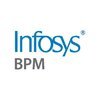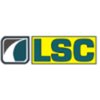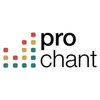Accounts Process Executive
30+ Accounts Process Executive Interview Questions and Answers

Asked in Infosys BPM

Q. What are the steps in the cash reconciliation process?
The steps in the cash process involve receiving cash, counting and verifying it, recording the transaction, and depositing the cash in the bank.
Receive cash from customers or clients
Count and verify the cash to ensure accuracy
Record the transaction in the accounting system
Prepare a deposit slip and deposit the cash in the bank
Reconcile the cash transactions with the accounting records

Asked in Infosys BPM

Q. What is the journal entry for purchase returns?
The journal entry for purchase returns involves debiting the accounts payable account and crediting the inventory account.
Debit the accounts payable account to reduce the amount owed to the supplier
Credit the inventory account to reduce the inventory on hand
Example: Debit Accounts Payable $500, Credit Inventory $500
Accounts Process Executive Interview Questions and Answers for Freshers

Asked in Infosys BPM

Q. What is the journal entry for a purchase order?
The journal entry for a purchase order involves debiting the inventory account and crediting the accounts payable account.
Debit the inventory account for the cost of the items purchased
Credit the accounts payable account for the same amount
Example: Debit Inventory $1,000, Credit Accounts Payable $1,000

Asked in Infosys BPM

Q. What is the formula for Return on Investment?
Return on investment (ROI) is a financial metric used to evaluate the efficiency or profitability of an investment.
ROI = (Net Profit / Cost of Investment) x 100
Net Profit is the total revenue generated from the investment minus the total costs incurred.
Cost of Investment includes all expenses related to the investment, such as purchase price, maintenance costs, and operating expenses.
ROI is usually expressed as a percentage, with a higher percentage indicating a more profitab...read more

Asked in Genpact

Q. What are the golden rules of accounting?
The golden rules of accounting are basic principles that guide the process of recording financial transactions.
The three golden rules of accounting are: Debit the receiver, Credit the giver; Debit what comes in, Credit what goes out; Debit all expenses and losses, Credit all incomes and gains.
These rules help ensure that financial transactions are accurately recorded and classified in the accounting system.
For example, when a company receives cash from a customer, the cash ac...read more

Asked in Infosys BPM

Q. What is meant by order to cash?
Order to cash is the process of receiving and fulfilling customer orders, invoicing, and receiving payment.
Order to cash involves receiving customer orders
Processing the orders
Invoicing the customer
Receiving payment for the order
It is a key process in the accounts receivable cycle
Accounts Process Executive Jobs



Asked in Encalm Hospitality

Q. How many types of invoices are there?
There are mainly three types of invoices: proforma invoice, commercial invoice, and credit memo.
Proforma invoice is a preliminary bill of sale sent to buyers in advance of a shipment or delivery of goods.
Commercial invoice is a formal request for payment sent by the seller to the buyer after the goods have been delivered.
Credit memo is a document issued by a seller to a buyer, reducing the amount owed by the buyer for returned goods or other reasons.

Asked in Infosys BPM

Q. What is the formula for a Personal account?
The formula for Personal account is: Personal account = Capital + Liabilities
Personal account represents the owner's equity in the business
It includes the owner's investments (capital) and any liabilities owed by the owner to the business
Formula: Personal account = Capital + Liabilities
Example: If the owner invests $10,000 in the business and owes $2,000 to the business, the Personal account would be $12,000 ($10,000 + $2,000)
Share interview questions and help millions of jobseekers 🌟


Asked in Infosys BPM

Q. What is the formula for a Real account?
The formula for Real account is Opening balance + Total debits - Total credits = Closing balance
Real account represents assets, liabilities, and owner's equity
Formula: Opening balance + Total debits - Total credits = Closing balance
Example: If the opening balance of a real account is $10,000 and total debits are $5,000 while total credits are $3,000, the closing balance would be $12,000

Asked in Infosys BPM

Q. What is the role of a process executive?
A process executive is responsible for overseeing and managing the various processes within a company to ensure efficiency and effectiveness.
Overseeing and managing various processes within the company
Ensuring efficiency and effectiveness in the processes
Identifying areas for improvement and implementing changes
Monitoring and analyzing process performance
Collaborating with other team members to streamline processes

Asked in Greet Technologies

Q. Do you know about Tally,GST and TDS
Yes, I am familiar with Tally for accounting, GST for taxation, and TDS for tax deduction.
I have experience using Tally software for maintaining accounting records.
I understand the concepts of GST (Goods and Services Tax) and its implications on business transactions.
I am aware of TDS (Tax Deducted at Source) and its requirements for tax deduction.
I have practical knowledge of how to handle GST and TDS compliance in accounting processes.

Asked in Honda Motorcycle & Scooter

Q. What is a proforma invoice?
A proforma invoice is a preliminary bill of sale sent to buyers in advance of a shipment or delivery of goods.
Proforma invoices are not considered true invoices because they are not recorded as accounts receivable by the seller or accounts payable by the buyer.
They are used to provide information to the buyer, including the items being purchased, their cost, and other relevant details.
Proforma invoices are often used in international trade to facilitate customs clearance and ...read more

Asked in Infosys BPM

Q. What is the formula for a Nominal account?
The formula for Nominal account is Opening balance + Total income - Total expenses = Closing balance
Nominal account formula is used to calculate the closing balance of an account
It is calculated by adding the opening balance to the total income and then subtracting the total expenses
Formula: Opening balance + Total income - Total expenses = Closing balance
Example: If the opening balance of a nominal account is $1000, total income is $500 and total expenses are $300, then the ...read more

Asked in Genpact

Q. What is accounts..what is journal..what is ledger... what is balance sheet
Accounts refer to financial records of a business. Journal is where transactions are initially recorded. Ledger is a collection of accounts. Balance sheet shows assets, liabilities, and equity.
Accounts are financial records that track the financial activities of a business.
Journal is where transactions are initially recorded before being transferred to the ledger.
Ledger is a collection of accounts that shows the financial position of a business.
Balance sheet is a financial st...read more

Asked in Infosys BPM

Q. What is meant by procure-to-pay?
Procure to pay is the process of obtaining goods or services from a vendor, including the steps of requisition, purchase order, receiving, invoice approval, and payment.
Procure to pay involves the entire process of purchasing goods or services from a vendor.
It typically includes steps such as requisitioning, creating purchase orders, receiving the goods or services, approving invoices, and making payments.
The process aims to ensure that goods or services are obtained in a tim...read more

Asked in CMR Green Technologies

Q. What is a sales invoice?
A sales invoice is a document issued by a seller to a buyer, detailing the products or services sold, the quantity, price, and payment terms.
Sales invoice is a legal document that serves as proof of a transaction between a seller and a buyer.
It includes details such as the date of the transaction, invoice number, payment terms, and any applicable taxes.
The invoice also lists the products or services sold, along with their quantities and prices.
It is used for accounting and re...read more

Asked in Apollo Pharmacy

Q. What is meant by accounting?
Accounting is the process of recording, summarizing, analyzing, and reporting financial transactions of a business.
Recording financial transactions
Summarizing financial data in financial statements
Analyzing financial information to make business decisions
Reporting financial results to stakeholders
Ensuring compliance with financial regulations
Examples: preparing balance sheets, income statements, cash flow statements

Asked in TCS

Q. What is a trial balance?
A trial balance is a list of all the general ledger accounts contained in the ledger of a business.
It is used to ensure that the total debits equal the total credits in the accounting records.
It helps in detecting errors in the accounting process.
It is prepared before the financial statements are finalized.
Example: If the total debits in the trial balance equal the total credits, it means the accounts are balanced.

Asked in Greet Technologies

Q. What is a Credit and Debit note?
Credit note is issued by seller to buyer for refund or adjustment, while debit note is issued by buyer to seller for additional payment or adjustment.
Credit note is issued by seller to buyer when there is an overpayment or refund due to the buyer.
Debit note is issued by buyer to seller when there is an underpayment or additional payment due to the seller.
Credit note reduces the amount payable by the buyer to the seller.
Debit note increases the amount payable by the buyer to t...read more

Asked in Greet Technologies

Q. What is meant by intangible assets?
Intangible assets are non-physical assets that have value, such as patents, trademarks, copyrights, and goodwill.
Intangible assets lack physical substance
They are long-term assets with no physical form
Examples include patents, trademarks, copyrights, and goodwill
Intangible assets are typically listed on a company's balance sheet

Asked in Greet Technologies

Q. What are the types of GST?
Types of GST include CGST, SGST, IGST, and UTGST.
CGST - Central Goods and Services Tax
SGST - State Goods and Services Tax
IGST - Integrated Goods and Services Tax
UTGST - Union Territory Goods and Services Tax

Asked in Greet Technologies

Q. What do you know about GST?
GST stands for Goods and Services Tax, a value-added tax levied on most goods and services sold for domestic consumption.
GST is a single tax on the supply of goods and services, right from the manufacturer to the consumer.
It has replaced multiple indirect taxes like VAT, service tax, etc.
GST has 4 tax slabs - 5%, 12%, 18%, and 28%.
Input tax credit can be claimed on taxes paid on input goods and services.
GST registration is mandatory for businesses with an annual turnover abov...read more

Asked in Greet Technologies

Q. What do you know about TDS and TCS?
TDS stands for Tax Deducted at Source and TCS stands for Tax Collected at Source. They are types of indirect taxes in India.
TDS is deducted by the payer at the time of making payment to the payee.
TCS is collected by the seller from the buyer at the time of sale of specified goods.
TDS rates vary based on the nature of payment, while TCS rates are fixed.
TDS is applicable on income like salary, interest, commission, etc., while TCS is applicable on sale of goods like scrap, mine...read more

Asked in Greet Technologies

Q. What type of expense is depreciation?
Depreciation is a non-cash expense reflecting the reduction in value of tangible assets over time.
Depreciation is classified as an operating expense on the income statement.
It represents the allocation of an asset's cost over its useful life.
For example, a company buys machinery for $100,000 with a 10-year life; it depreciates $10,000 annually.
Depreciation affects net income but does not involve actual cash outflow.

Asked in LSC Infratech

Q. Rules of accounting
Rules of accounting are the guidelines and principles that govern the preparation of financial statements.
Accounting equation must always balance: Assets = Liabilities + Equity
Revenue recognition principle: Revenue should be recorded when it is earned, not when cash is received
Matching principle: Expenses should be recorded in the same period as the revenue they help generate
Conservatism principle: When in doubt, choose the option that will result in lower profits or higher l...read more

Asked in Genpact

Q. What is depreciation?
Depreciation is the allocation of the cost of a tangible asset over its useful life.
Depreciation is a non-cash expense that reduces the value of an asset over time.
It reflects the wear and tear, obsolescence, or decrease in value of the asset.
Common methods of calculating depreciation include straight-line, double declining balance, and units of production.
Example: A company buys a delivery truck for $50,000 with a useful life of 5 years. Using straight-line depreciation, the...read more

Asked in Prochant

Q. What are the common reasons for claim denials?
Incomplete or inaccurate information, lack of pre-authorization, coding errors, non-covered services, duplicate claims
Incomplete or inaccurate information provided on the claim form
Lack of pre-authorization for the services rendered
Coding errors in the submitted claim
Services not covered under the patient's insurance plan
Duplicate claims submitted for the same service

Asked in Infosys

Q. To prepare gsts To transfer money to ap
To prepare GSTs and transfer money to AP
To prepare GSTs, you need to gather all the necessary financial data and calculate the applicable taxes
Ensure that all the invoices and receipts are properly recorded and categorized
Submit the GST returns to the tax authorities within the specified deadlines
To transfer money to AP (Accounts Payable), you need to initiate the payment process
Verify the accuracy of the payment details and ensure proper authorization
Choose the appropriate p...read more

Asked in Infosys

Q. What technical knowledge have you applied?
I have applied technical knowledge in accounts through software tools, data analysis, and process optimization to enhance efficiency.
Utilized accounting software like Tally and QuickBooks for accurate financial reporting.
Implemented Excel functions for data analysis, improving report generation time by 30%.
Conducted reconciliations using automated tools, reducing errors in financial statements.
Applied knowledge of tax regulations to ensure compliance and optimize tax liabilit...read more

Asked in Muthoot Fincorp

Q. Please introduce yourself.
Detail-oriented Accounts Process Executive with a strong background in financial analysis and customer service.
Educational Background: Bachelor's degree in Accounting from XYZ University.
Professional Experience: Over 3 years of experience in accounts payable and receivable.
Technical Skills: Proficient in accounting software like QuickBooks and SAP.
Key Achievements: Successfully reduced invoice processing time by 20% through process optimization.
Soft Skills: Strong communicati...read more
Interview Questions of Similar Designations
Interview Experiences of Popular Companies








Reviews
Interviews
Salaries
Users

















